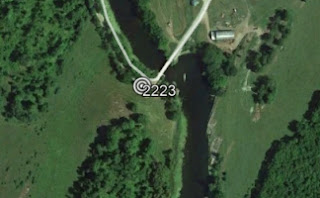I had some time to paint with my chores all done. The sun was shining. A spring storm had just left and certainly another was on the way in the Polar Vortex flow. But spring was in the air. I saw a wood duck drake whistle overhead. The trumpeter swans were especially vocal as were the crows. The sounds were a symphony for spring which had not quite arrived.
The turkeys were curious to see what I was up to. An unidentified bird almost landed on me. I just felt the flutter of wings on my shoulder and then it was gone. Maybe it was an angel? It was warm enough that I wore my summer painting hat instead of a toque. The sun felt really nice on my back.
There was not much time so I focussed on the snow shadows that trailed across the crystalline snow pack. The ridge is a finger of gneiss that runs northeast-southwest. Similar and parallel ridges from an ancient continental plate collision defines the landscape of the Frontenac Arch Biosphere. There is still not much soil on these ridges but the deciduous trees still find a way to flourish. Gneiss when pronounced sounds a lot like "nice" so that is my subtle pun.
For this and much more art, click on Pixels. Thank you.
The turkeys were curious to see what I was up to. An unidentified bird almost landed on me. I just felt the flutter of wings on my shoulder and then it was gone. Maybe it was an angel? It was warm enough that I wore my summer painting hat instead of a toque. The sun felt really nice on my back.
There was not much time so I focussed on the snow shadows that trailed across the crystalline snow pack. The ridge is a finger of gneiss that runs northeast-southwest. Similar and parallel ridges from an ancient continental plate collision defines the landscape of the Frontenac Arch Biosphere. There is still not much soil on these ridges but the deciduous trees still find a way to flourish. Gneiss when pronounced sounds a lot like "nice" so that is my subtle pun.
For this and much more art, click on Pixels. Thank you.





































